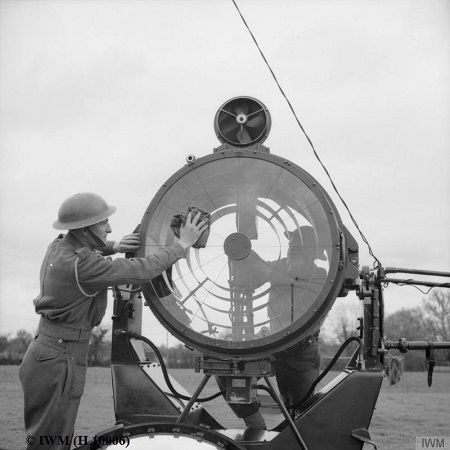The first use of searchlights by the British military was by the Royal Navy in 1882, as part of the measures to prevent the Egyptians from attacking Alexandria. By 1907, they had become a standard item of equipment and were used widely by both the Army and the Navy. By WW2, they were also used as a means of defence against night-time attack from the air; usually controlled by sound locators and / or radar, they were used to locate and track the bombers. This allowed for the anti-aircraft guns to target the attackers, as well as dazzling the crews in the bombers. Aircrews particularly hated being caught in the beams of the searchlights as they associated this with effectively being dead.

In WW2, there were two main companies who built searchlights, General Electric and Sperry. These were 60 inches (152.4 cm) in diameter, using carbon arc-light reflected via a rhodium-plated parabolic mirror with a range of 28-35 miles (45-56 km). Powered by 15 Kw generators, they had a maximum output of 800 million candela.

In WW2, there were two main companies who built searchlights, General Electric and Sperry. These were 60 inches (152.4 cm) in diameter, using carbon arc-light reflected via a rhodium-plated parabolic mirror with a range of 28-35 miles (45-56 km). Powered by 15 Kw generators, they had a maximum output of 800 million candela.
